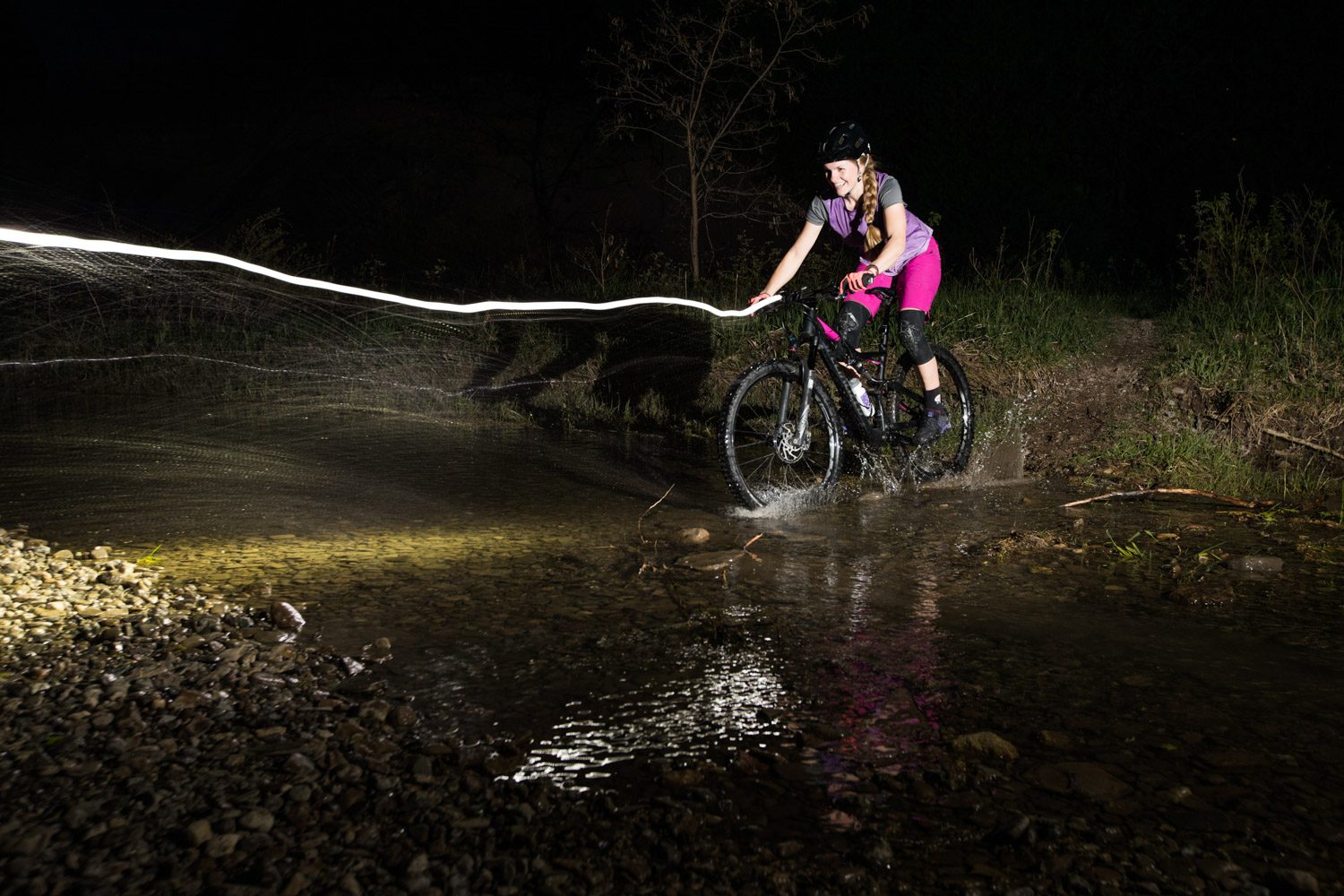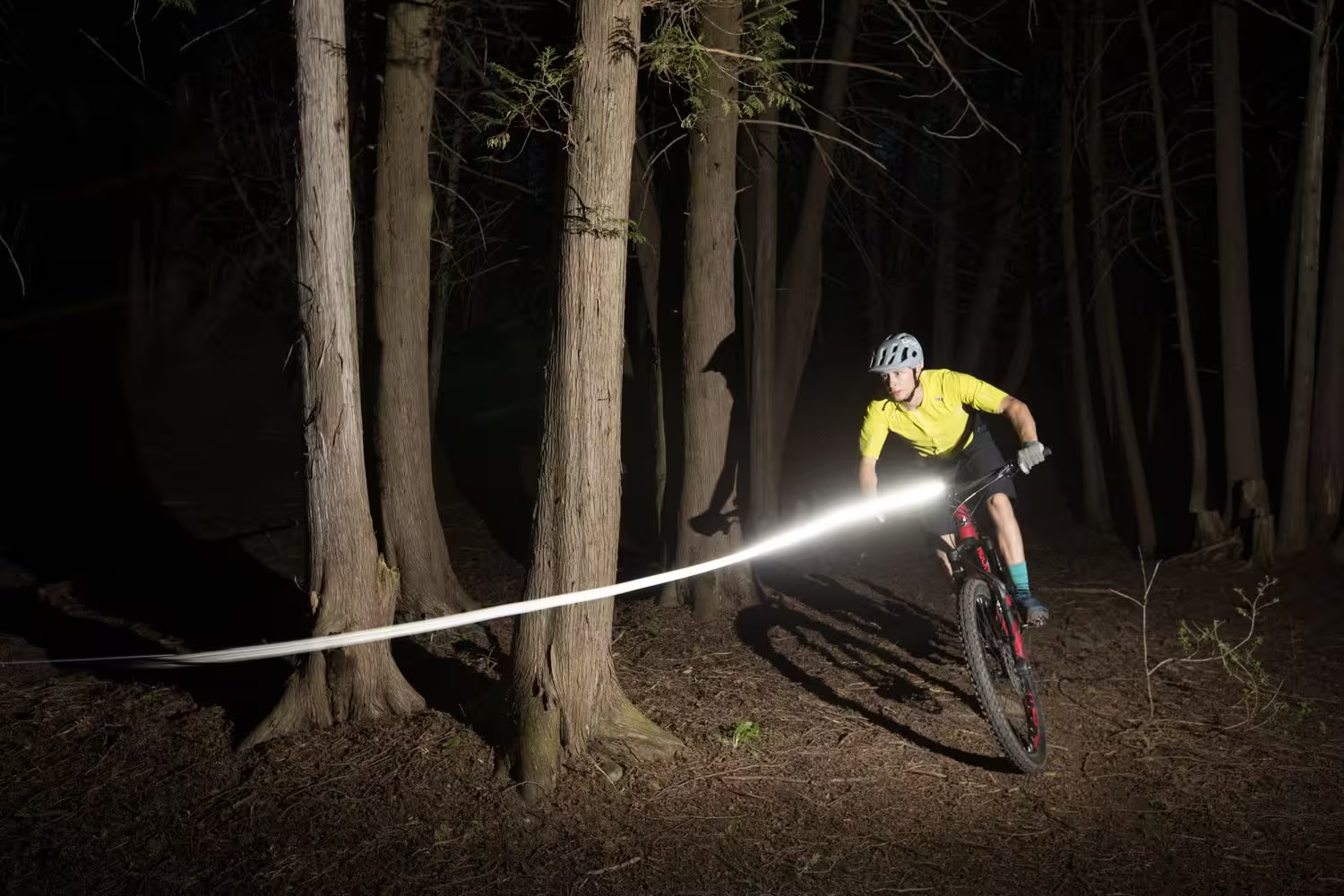With daylight hours disappearing, squeezing in your daily ride is getting more and more difficult. Night rides are the best solution; plus they’re one heck of a good time. Your regular old trail suddenly seems faster and more exciting then ever before. But to truly enjoy it, you need the right lights. You can’t just duct tape a flashlight to your handlebars and go for a rip.
Brightness
Light output is measured in lumens. For urban rides or trails with ambient lighting, 200-500 lumens is enough. But when you’re out on singletrack, aim for 1000 lumens or more to ensure you can see where you’re going. The higher the lumen count, the more visibility you’ll have, giving you confidence and control.
Long-distance visibility
You want a light that’s not only bright but also reaches far enough down the trail. Again, lights with at least 1000 lumens are ideal, especially when they combine spot beams for distance with flood beams for peripheral vision. That mix helps you anticipate terrain changes, turns, and obstacles well in advance.
Light modes
The best lights offer multiple modes—high, medium and low—to adjust to various conditions. High is for tough descents or dark trails, medium is great for general riding, and low conserves battery for well-lit sections. Some lights also feature strobe or SOS modes, which according to manufacturers can be helpful in emergencies. We haven’t had to test that out yet thankfully.
Battery life
Battery life is crucial, especially for long rides. If you’re out for hours, a light with a solid battery life that matches your riding style is non-negotiable. Look for lights that offer adjustable settings so you can conserve energy when needed and crank up the brightness when you hit tough spots. While doing your research, handy calculators like this one will help figure out how many hours you’ll get out of a charge.
Ruggedness
I’ve learned this one multiple times over the years; mountain biking is tough on lights. Your lights should be able to withstand bumps, dirt and rain. Look for lights with an IP rating of 4 or higher, indicating resistance to dust and water. That way, you can ride in all conditions without worrying about your lights giving out. Also be nice to the cables; dangling your heavy battery by the cable will quickly break the connection. Ask me how I know.

Ease-of-use
You want a light that’s easy to adjust…
Click Here to Read the Full Original Article at Canadian Cycling Magazine…

